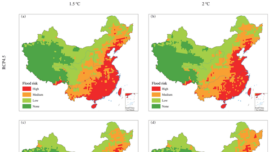
José I. Duarte
Economist, Macau Business Senior Analyst
The debate about the impact of mass tourism is going on in several places around the world. In some, it is very visible and, one might say, vociferous. It is (or will be) possibly everlasting. Tourism impacts local populations’ livelihoods and environment in multiple ways, some more amenable than others. Specific local issues will play out differently in different places, and diverse solutions will be tried – but the core issue is essentially the same. Too many people, either physically or psychologically, probably both, affect conspicuously how the locals go about their daily lives.
Setting such discussions around concepts such as carrying capacities and quotas is almost intuitive and provides a first easily understandable frame of reference. But, as argued here before, the simplicity of the approach may turn out to be too crude to lead to effective policies. It may be a starting point, but hardly an anchor for effective policies.
So, it all starts with increasing numbers of visitors. However, all the visitors are not the same, either in their contribution to the residents’ income or occupation of the physical space. (A short note is justified at this point before we proceed. Published statistics focus on the number of visitors, their length of stay, and their spending profiles. Other relevant matters, relating to their space and time distribution and concentration while in town require systematic information collection that is not readily available, if at all.)
The main distinction, between tourists (those staying overnight, as they are technically defined) and same-day visitors (self-explanatory) provides a good starting point for the discussion. They are associated with different spending profiles – and those differences matter. They impact local activities in diverse (positive and negative) ways.
Available data tell us that the average overnighter spends, gambling aside, four to five times more than same-day visitors. Indeed, part of that difference is directly linked to the fact that overnighters usually pay for lodging, a significant item in their expenditure basket. But even if we set aside that item (important as it is for the local economy’s direct and indirect income and employment), overnighters still typically spend at least twice as much as their single-day counterparts.

Indeed, the bulk of visitors come from mainland China and the overall figures in all types of expenditure are heavily influenced by their spending patterns. But, again, averages hide significant behavioural differences. Unsurprisingly, most visitors come from Guangdong and Fujian provinces, for reasons of geographical proximity and social affinity. The average consumption for all Chinese visitors is, therefore, quite close to the corresponding figures for those two regions. Yet, significant differences are visible, even at this high level of data aggregation.
For instance, visitors on individual visas consistently spend above the global average (by very variable margins, we may note, the reasons for which would be interesting to investigate). That difference seems related to the behaviour of visitors from regions other than the two closest ones seen above. Distance and visit frequency may play a role in them, but we can only guess, at this point – the data is too aggregated for further judgment).
Indeed, all this conversation needs to go beyond the cold analysis of figures and the things they can (fruitfully) tell us. Yet, a careful examination of patterns, trends, and their evolution, is a needed starting point. It will help us to understand the flow of visitors, their distribution, and their spending profiles – and identify their drivers. It should inform any policies concerning the management of the city as a tourist destination, as well as its promotion.
























